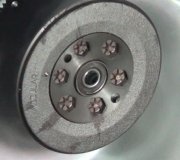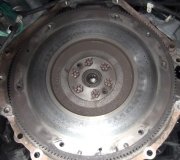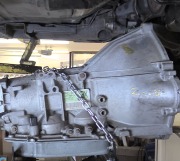An automatic transmission can have issues related to fluid leaks, shifting and operational errors, this guide will help sift through the easy problems and then transfer onto the more difficult issues.
What Goes Wrong?
The automatic transmission is a complex series of planetary gears, hydraulic pressure and oil control, lock up torque converter, solenoids and sensors contained inside a cast transmission case. As parts and fluid wear it can cause operational issues which could be a minor repair.
What Does it Cost?
When troubleshooting transmission problems it greatly depends on the experience of the mechanic working on the vehicle, too many times the wrong information can lead you down the incorrect path which becomes expensive. We hope to help you understand which way to go when a particular problem arises.
Lets Jump In!
Fluid Leaks are a huge issue, this repair will greatly depend on the location
of the leak. If it is not clear where the leak is coming from, clean the transmission
off using a degreaser such as 409 cleaner and hose off, then take the vehicle for
a short drive and inspect for a leak which is done best by
lifting the vehicle on jack
stands. Common leak areas are the transmission pan gasket which can be fixed
by performing a simple
transmission service. Additional leaks can be caused by a faulty rear driveshaft
seal which can be repaired by removing
the driveshaft and replacing the seal which is relatively easy to do. More difficult
leaks come into play when the converter seal or front pump seal are leaking because
this requires the
removal of the transmission.
More obscure leak areas include the cooler lines, sensors or sensor O rings or the
fluid cooler, which again are relativity easy to replace or repair. If the fluid
level is low with no visible leaks check the radiator for fluid in the coolant,
the cooler inside the radiator may be leaking and cross-contaminating the radiator
coolant, the coolant will be milky pink, this will warrant a
radiator replacement,
cooling system service
and transmission service.
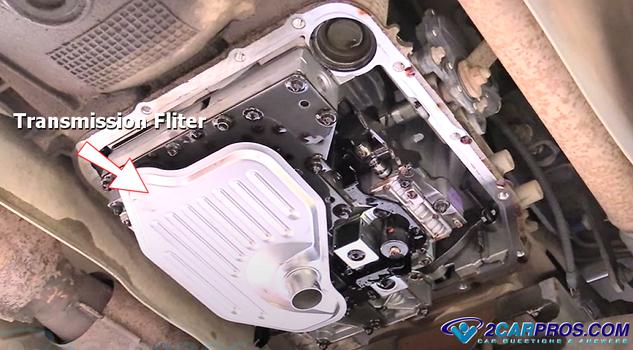
Not Shifting, for this problem we recommend
using a code scanner to see if there is a code issued for a shift control solenoid,
fluid pressure sensor, input or output shaft speed sensor, P0715, P0720, P0750 or
P0847. To repair sensor issues simply remove
the fluid pressure sensor and replace it with a new one. A shift solenoid problem
is a little more difficult because the transmission pan will need to be removed.
The shift solenoid is attached to the transmission valve body and is easily changed,
held on by one small screw or bolt and a wiring connector. An input/output shaft
speeds sensor can be replaced externally or internally depending on the manufacturer's
design.
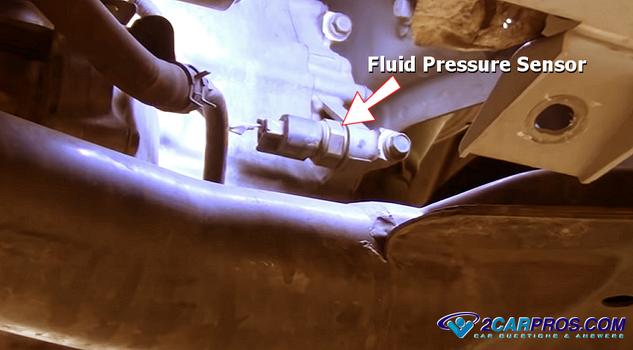
Won't Go Into Gear - Forward or Reverse, for this problem you must determine
if the shift cable is working, in other words does the shifter feel like it is not
doing anything, no detent? If so the shifter cable needs replacement. If the transmission
fluid is low the hydraulic pump cannot build pressure, simply
check the transmission
fluid level and add as needed, if the transmission is operated for an extended
amount of time with low fluid it can fail prematurely. If the fluid level is okay
and there are no codes unfortunately this may be a larger problem, the unit could
have failed internally such as a fluid pump or input or output shaft failure which
will warrant a replacement or rebuild.
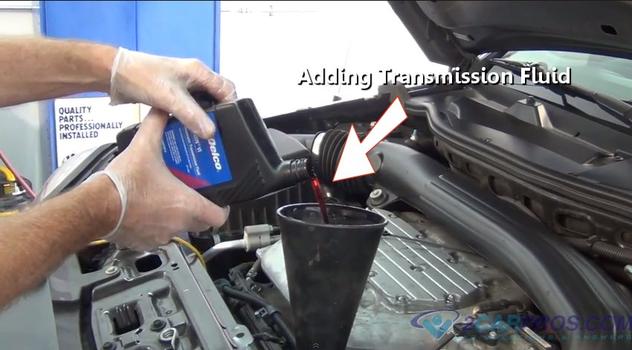
Stuck in Park, All vehicles have a safety device called a Shift Lock Control that holds the transmissions in park gear while the key is off, and the brake pedal is not depressed. This device uses a control solenoid located near the shifter. Nine times out of then the problem will be a fuse, control solenoid or brake light switch.
Slips out of gear around a corner, this problem is easy to fix and is caused by low fluid level, with the engine warm check the transmission fluid level which should be in the safe zone of the dipstick or fill hole level.
Automatic transmissions make specific noises when a malfunction occurs, for example if the transmission filter becomes clogged due to debris, it can make a whirring noise which means the unit needs to be serviced. If the fluid level is low, you might hear a bubbling sound which is caused by the pump scavenging fluid inside the transmission pan. When a transmission has a major failure you might hear a loud "pop" which could mean a drive component inside the transmission has failed.
Transmission is slipping which is an indication or low internal fluid pressure or worn clutch discs or bands, check the condition of the fluid, some discoloration and darkening is normal as the fluid ages, but if the fluid is brown or has a burnt smell it is badly overused and a transmission service is needed which can help. If this condition is too severe the transmission will need to be removed and rebuilt or replaced.
Questions?
Our certified technicians are ready to answer car repair questions for free. We hope you saved money and learned from this guide. We are creating a full set of car repair guides. Please subscribe to our 2CarPros YouTube channel and check back often for new videos which are uploaded regularly.
